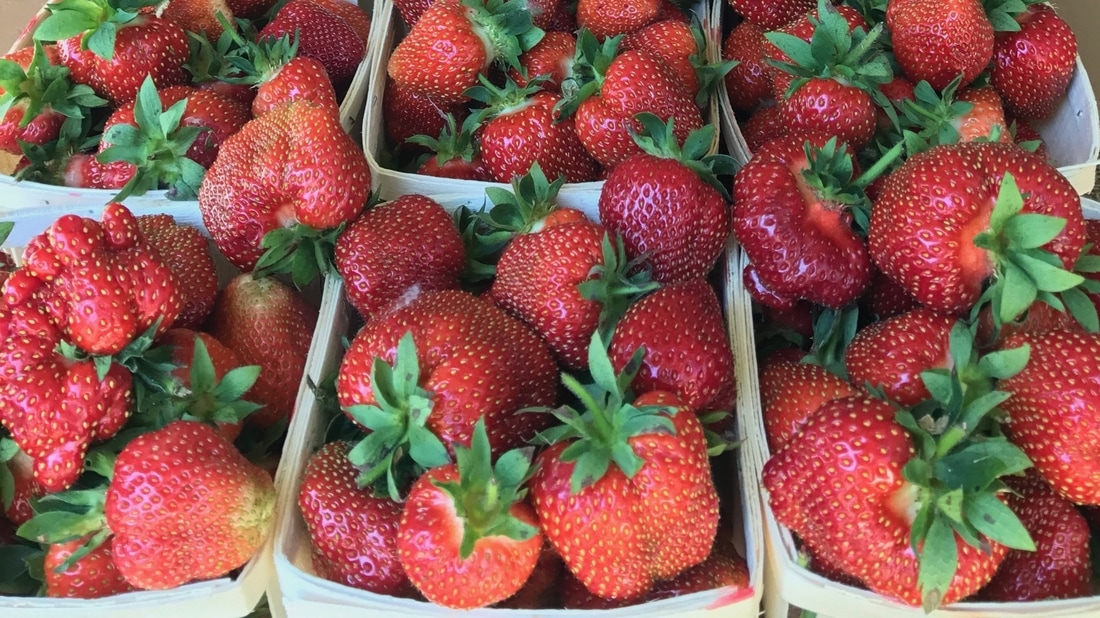|
You know the phrase, "grows like a weed?", enough said.
For the last two weeks Kaitlyn and I have been in the fields weeding. I really don’t stress about it because it takes your mind to another place and it's kind of relaxing…if you can imagine that. It’s not without its hazards though. You are on your hands and knees, in the baking sun, pulling everything but the very plant your are trying to protect. The rows go on for as far as the eyes can see and six hours goes by in a blink. You really don’t know land and the soil until you’ve done this simple task. It’s so necessary. Today we head back out to fight the good fight! For more Homegrown News subscribe to my newsletter! Like or Tweet this article to a friend by clicking the badges below. Thank you for your support.
2 Comments
The timing of the solstice is not based on a specific calendar date and time. It really depends on when the sun reaches its northernmost point from the equator. The word solstice is from the Latin solstitium, from sol (sun) and stitium (to stop), reflecting the fact that the sun appears to stop at this time (and again at the winter solstice). "Deep snow in winter, tall grain in summer." - Estonian proverb In temperate regions, we notice that the sun is higher in the sky throughout the day, and its rays strike Earth at a more direct angle, causing the efficient warming we call summer.
This summer solstice is the day with the most hours of sunlight during the whole year. At the winter solstice, just the opposite occurs, the sun is at its southernmost point and is low in the sky. Its rays hit the Northern Hemisphere at an oblique angle, creating the feeble winter sunlight. For more Homegrown News subscribe to my newsletter! Reference: The Farmer's Almanac Like or Tweet this article to a friend by clicking the badges below. Thank you for your support. Strawberries have been on our stand for over a week now and they are always met with great fanfare. We think of them as dessert or a quick snack, but did you know how awesome they are for you? Rich and vitamin C strawberries boost the system and contain chemicals that offer cancer protection.
Strawberries rank very high in antioxidant activity. They are extremely rich in vitamin C (an average portion contains the entire recommended daily amount for an adult) and this helps to boost the immune system and help wound healing, prevent arterial damage, promote iron absorption, and strengthen blood vessel walls. They also contain other antioxidant phenolic plant chemicals such as anthocyanins and ellagic acid, which can block cancer cells and can help prevent some cancers. Lastly they contain good amounts of fiber, folate and potassium. The Good Stuff:
Tips:
Related: For more Homegrown News subscribe to my newsletter! Reference: 100 Best health Foods, Eat This Not That, Cooking Light What to Eat Like or Tweet this article to a friend by clicking the badges below. Thank you for your support. It's that time of year. We all have fruits and veggies on our counters and sometimes a piece of produce goes bad with out us knowing. Boom, we have a fruit fly problem. Here's a quick and easy hack to solve this! By simply pouring apple cider vinegar into an open cup or bowl and adding a drop or two of dish detergent you can easily make an incredibly effective trap for ridding your kitchen of fruit flies. Place it near your fruit bowl or trash can and within a day you will have nipped the problem in the bud. Supplies:
Preparation:
Why This Works: Fruit flies are attracted to the smell of the vinegar and will attempt to land on the surface. However, since the dish soap breaks the surface tension of the vinegar, the fruit flies fall in and sink to the bottom. Benefits:
Tips:
Prevention:
For more Homegrown News subscribe to my newsletter! Reference: 100 Best health Foods, Eat This Not That, Cooking Light What to Eat Like or Tweet this article to a friend by clicking the badges below. Thank you for your support. It's always disappointing after you purchase berries only to find them beginning to turn and covered in mold just a few days later. Here's an easy hack to solve this dilemma! A little vinegar solution can keep that fuzzy mold off your delicate summertime berries and extend their shelf life.
Supplies:
Preparation:
Why This Works: The vinegar and water solution destroys bacteria and mold spores, helping the berries last longer. Benefits:
For more Homegrown News subscribe to my newsletter! Reference: 100 Best health Foods, Eat This Not That, Cooking Light What to Eat Like or Tweet this article to a friend by clicking the badges below. Thank you for your support. Romaine lettuce is so versatile in our kitchens. It can be served raw and cooked, but did you know it packs an incredible healthy punch? Our farmstand is stocked with the Greentower variety. It's beautifully green, crunchy and mild, read why it should be on your dinner table tonight! Mildly sedative, lettuce can help promote sleep. It is also a useful, low-calorie, high-fiber food for dieters.
There are dozens of different types of lettuce available both in the stores and to buy as seed but, when making your choices for health reasons it makes sense to pick varieties that are mid to deep green. These contain more carotenes and vitamin C than the more paler lettuces. Romain lettuce for example contains five times as much vitamin C and more beta-carotene than Iceberg lettuce. These more colorful heads will contain good amounts of folate, potassium and iron. Lettuce is high in fiber very low in calories and low on the glycemic index. The Good Stuff:
Facts:
Tips:
Related: For more Homegrown News subscribe to my newsletter! Reference: 100 Best health Foods, Eat This Not That, Cooking Light What to Eat Like or Tweet this article to a friend by clicking the badges below. Thank you for your support. |
AboutFollow Bardwell Farm and all of our adventures here! Archives
April 2024
Categories
All
Gift CardsGive the gift of a CSA farm share or farmstand goods with gift certificate from Bardwell Farm! NewsletterSubscribe to Harry's Farmstand Monthly newsletter! |
DIRECTIONS |
|
|
©2022 BARDWELL FARM, ALL RIGHTS RESERVED
|



 RSS Feed
RSS Feed


